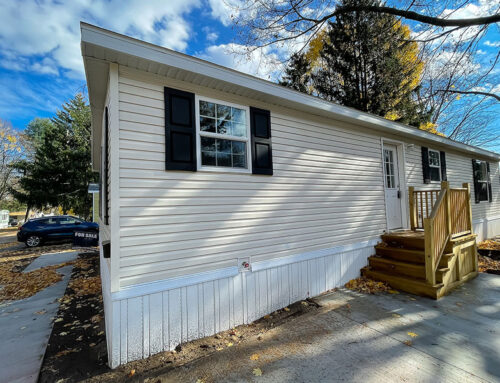“The Bernie Madoff of Landlords,” as the New York’s attorney general called Steven Croman, is locally famous for his abusive and extreme rental management practices. His whole rental investment business strategy was based on evicting tenants in rent-stabilized apartments across approximately 150 buildings that he owned in New York City. Once the tenants were evicted from the rent-stabilized units, Croman sought to deregulate them to garner higher market rates.
Tenants say he went so far as to hire an ex-police officer to intimidate them into moving out, among other acts of harassment. It got so bad that a piping-mad tenant took action, setting up a “Stop Croman Coalition” website to organize against his tactics. However, it all came to a head when Croman pleaded guilty to three felonies involving fraudulent refinancing and tax fraud. Amongst the cheers, a local pizza restaurant added to the celebration by giving out free wine to residents who mentioned Croman’s tarnished name.
Unfortunately, stories such as this are not uncommon. Many areas are experiencing swift gentrification and rising rents can tempt unscrupulous landlords. But new legislation aims to put a stop to landlord harassment of rent-controlled tenants. As a long-time New York City landlord, I wanted to take a few moments to discuss the best practices for handling evictions in a climate where tenant’s rights remain a hot-button issue.
Evicting a Rent-controlled Tenant in NYC: What Not to Do
While the Rent Control Board recently approved modest rent increases on one-year leases for rent-controlled units—the first such increase in three years—many landlords feel it isn’t enough to keep their investments afloat. In October, you will be able to raise the rents by 1.25% on one-year leases and 2% on two-year leases. That’s well below the 4-6% increase that our largest lobbying group, the Rent Stabilization Association, had pushed for. These rent-controlled units are all in older buildings built before 1974. As such, they require more maintenance and upkeep than would be necessary for newer construction. Many landlords feel that this minimal rent increase does not address the issue of holding costs.
If you are amongst this group of property owners, you may be tempted to rashly attempt to evict your tenant(s) in order to gain higher revenue. However, heed a warning: Last month, the attorney general’s office proposed a bill that would make tenant harassment criminally prosecutable. While current laws are fairly lax—no landlords have been criminally convicted under current laws—the new legislation is about to come down much harder. Commencing dust-scattering construction projects, turning off the heat, or threatening to call immigration on tenants to drive them out could lead to felony charges.
How Can You Evict a Tenant From a Rent-Stabilized Unit?
You may be faced with the issue of evicting a rent-controlled tenant under certain circumstances but beware that it’s not an easy thing to do. In New York, all evictions must go through a court proceeding and, in some situations, you will first need to get approval from the Department of Housing and Community Renewal (DHCR). You may be granted the approval to go ahead with the eviction process if the tenant fails to pay rent, significantly violates their lease, damages the unit, or uses the apartment illegally. It’s best to hire an attorney to help you navigate the complexities of the eviction so you don’t face a legal misstep and its consequences.
There is one scenario where you can take possession of the rent-controlled unit, potentially without going through the eviction process. If you want to use the apartment for your personal primary residence, you can refuse to renew the tenant’s lease. However, you will need to serve the tenants with notice at least 90 days before the lease comes up for renewal. That said, the tenant may refuse to move and force your hand to begin eviction. And, if the tenant is 62 years plus or disabled, the eviction will not fly in the courts unless, perhaps, you provide them with an equivalent unit at the same or lower rent nearby. Again, this is a sticky legal situation and it’s wise to seek help from an attorney who can advise you as you sort through it all.
Solutions for Landlords of Rent-stabilized Units
If you are in the position of owning a rent-stabilized investment property and feeling the financial pinch, there’s still hope. Diversifying your real estate portfolio to include other non-stabilized units can help offset the losses. Be careful when selecting your next investment though. You’ll want to carefully evaluate the property and any necessary repair costs to ensure that you can achieve a reliable cap rate so you don’t end up with another difficult situation.
As an independently owned and operated HomeVestors® franchisee, I use the proprietary ValueChek™ software to evaluate all potential investments. That way, I can be more confident I am paying a price that makes sense for the property. If you could benefit from some of the best real estate investment tools and resources to grow your portfolio, give HomeVestors® a call today.
Each franchise office is independently owned and operated.
Contact
"*" indicates required fields





